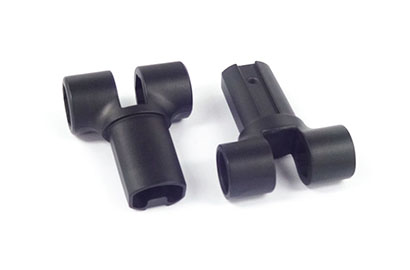
After loading and adjustment, the lathe can automatically complete the work cycle according to a certain procedure and repeatedly process a batch of workpieces. In addition to loading and unloading workpieces, lathes that can automatically complete the work cycle are called semi-automatic lathes.
The automatic lathe can reduce the labor intensity of workers, shorten the auxiliary time, and can take care of multiple machine tools by one person, and the productivity is high.
According to the number of spindles, automatic lathes are divided into two categories: single-axis and multi-axis. The former mainly has three types: single-axis longitudinal cutting, single-axis turret and single-axis cross-cutting; the latter mainly has two types of sequential operation and parallel operation, and according to the configuration of the spindle, there are vertical and horizontal types. .
Machine tools generally use cams and stops to automatically control the movement of the tool post, headstock and other auxiliary movements. The single-axis slitting automatic lathe (Figure 1) uses cold-drawn bar as the blank. In addition to rotating, it also feeds longitudinally with the headstock, and the tool post cuts and feeds transversely to obtain high machining accuracy.
The machine tool is also equipped with accessories for drilling, reaming (see reaming) and thread cutting. It is an important machining equipment for the instrument industry. The single-axis turret automatic lathe has a turret tool post and multiple transverse tool posts, which can be cut in sequence with a variety of tools and is suitable for processing small workpieces with complex shapes.
The spindle box and the tool post of the single-axis transverse cutting automatic lathe do not make longitudinal feed movement, but the transverse feed movement of the forming tool completes the cutting process. This kind of machine tool is only used for processing simple shape, small size pin and shaft workpiece.
Sequential operation of multiple spindles (usually 4, 6, 8) of a multi-spindle automatic lathe (Figure 2) are installed in a spindle drum that can be indexed periodically, and the blanks clamped in the spindle pass through each process sequentially. Finish the processing of different procedures, and cut or unload at the last station.
This lathe is suitable for processing workpieces with more complex shapes. The parallel operation multi-axis automatic lathe has several fixed position (usually 2 or 4) spindles, and the same process is processed at several stations at the same time, which is suitable for processing simple workpieces.
Automatic lathes that use cams and stoppers as control elements work stably and reliably, and still account for the majority of automatic lathes.
However, when the workpiece is changed, it is necessary to redesign and manufacture the cam, and it takes more time to adjust the machine tool, so it is only suitable for mass and mass production. Since the 1950s, program-controlled automatic lathes controlled by latch plates and digitally controlled automatic lathes controlled by punched belts or electronic computers have appeared one after another, which have also been applied in small and medium batch production.
Safety operating procedures
(1) Before working, lubricate the machine tool according to regulations, check whether the handles are in place, and drive a slow car for a test run for five minutes, and confirm that everything is normal before operation.
(2) The chuck chuck must be fastened firmly, and the wrench cannot be left on the chuck or chuck when starting up.
(3) The workpiece and the tool should be clamped firmly, the tool bar should not be extended too long (except for boring); the small tool holder should be turned to stop to prevent the tool from colliding with the chuck, the workpiece or scratching the hand.
(4) When the workpiece is running, the operator cannot stand directly on the workpiece, not lean on the lathe, or step on the oil pan.
(5) Chip breakers and shields should be used during high-speed cutting.
(6) High-speed anti-braking is prohibited, and the vehicle should be returned and stopped smoothly.
(7) To remove iron filings, use a brush or special hook.
(8) When polishing the workpiece with a file, the right hand must be in front and the left hand is behind; when polishing the workpiece with emery cloth, use "hand clamp" and other tools to prevent strangulation.
(9) All working, measuring, and cutting tools should be placed in a safe place nearby to be neat and orderly.
(10) The lathe is not stopped, and it is forbidden to take the workpiece or measure the workpiece on the lathe.
(11) When the lathe is working, it is prohibited to open or remove the protective device.
(12) Near the end of get off work, the lathe should be cleaned and wiped, and the tailstock and carriage box should be retracted to the far right end of the bed.
Tel
+86 181-2858-1278/ Mr. Ye
Tik Tok

Tik Tok

E_mail
dajin@goldmetal.com.cn